Karel Kapek, a Czech writer, used the term ‘robot’ meaning ‘slave’ for the first time in a play Rossum’s Universal Robots. This famous robot in history was made by man, and instead of being loyal, killed him. Since long ago, man has been seeking to discover less labor intensive and more efficient means of doing work. Industrialization was a step forward, and the development of robots started in its later and more current stages. Efforts were made to develop stronger, more efficient, and more human-like robots in various shapes and sizes to perform various tasks. Human beings have also been after finding some reliable pet-like machine. A robot is usually a computer programmed, semi or fully automatic, electromechanical machine capable of performing light and heavy duties quickly or slowly as well as critical tasks requiring scientific accuracy and precision-like duties like cardiac surgery. Almost all of the developed countries have taken a keen interest in the development of robots, but Japan has excelled in quite a few aspects of robotics, the science relating to robots. In the development of humanoid robots, the Japanese have even incorporated the aesthetic aspects and have succeeded in developing robots which can produce human facial expressions.
1. Gakutensoku
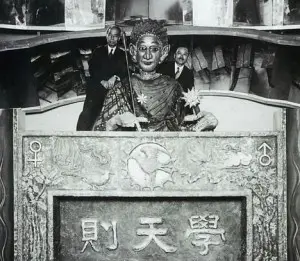
Gakutensoku was the first robot produced in 1929 in Osaka, Japan. ‘Gakutensoku’ means ‘to learn from nature.’ And throughout the development of robots, it has been kept in mind by the Japanese innovators and scientists as a guiding principle. Makoto Nishimura, a former professor at Hokkaido Imperial University, designed it. The human-like robot had a pen-like arrow in its right hand, a lamp in the left hand, and a bird on its head. The robot expressed a pensive mood, and turning on the light prompted the robot to start writing. The robot was displayed in an exhibition in Germany. An asteroid 9786 Gakutensoku was named after it.
2. Geminoid F

Geminoid F is a robot developed by Ishiguro, a professor of Osaka University, best known for creating his own robot replica in 2006 and named it Geminoid Hi-1. For his great creation, CNN named him as one of the eight ‘Geniuses Who Will Change Your Life.’ The BBC recorded his story in a documentary Man-Machine 1. Ishiguro built the robot Geminoid F at ATR Intelligent Robotics and Communication Laboratories in collaboration with Kokoro Co. Geminoid F looks like a woman in her 20s with long, dark hair and is capable of smiling or frowning. Her change of facial expressions is more natural than all the other earlier robots. It requires a fewer number of actuators and is cost effective and compact.
3. Microrobot
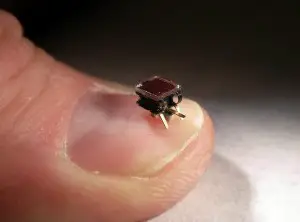
Dartmouth researchers have produced the smallest robot in the world. The robot is thinner than human hair and smaller in diameter than a dot. Many researchers led by Bruce Donald and Edward J. Foley, Jr., a computer science professor at Dartmouth, developed this computer in their efforts to miniaturize and develop an even smaller computer than the prevalent microcomputers. In Donald’s own words, ‘It is’¦thousands of times smaller in mass than previous untethered microbots that are controllable’¦It doesn’t drive on wheels but crawls like a silicon inchworm, making tens of thousands of ten-nanometer steps every second.’
4. da Vinci Surgical System

Dr. Friedrich-Wilhelm Mohr performed the robotically assisted heart bypass in May, 1998, using the da Vinci Surgical System. The system has been approved by the FDA. It consists of a console with four arms, three for handling surgical tools and one for the camera, which enables the surgeon to use the console to be very precise in his or her surgical operation through observing the three-dimensional image of the object. The sytem was named after Leonardo da Vinci according to the manufacturer as he is considered the first inventor of a robot.
5. Kuka Kr 1000

The German robot manufacturer, Kuka Robotics, developed the world’s biggest and strongest robot Kuka Kr 1000 Titan 6 Axis Robot on June 13, 2007. Its payload capacity is 1000 kgs, with a reach of 3.2 meters and a static torque of 60,000 Newton meters. It can handle precisely objects like ships and aircraft components, marble blocks, and prefabricated concrete structures. Stuart Shepherd, President of Kuka Robotics Corporation said, ‘This new robot can be implemented in applications which until now required at least two robots, lift stations, or other lifting equipment thus saving valuable floor space and increasing efficiency.’
6. IRobot Roomba 560
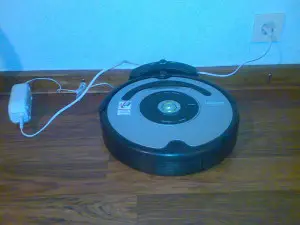
IRobot Roomba 560 is one of the most used domestic robots. It is a purpose made vacuum cleaner providing some very special features. For example, its working area can be defined, and it will not go beyond the preset walls. It is also provided with a mechanism to disentangle it through a reversal of its direction of rotation in case a fabric causes some obstacle. It can cleanse the areas not easily accessible, like the area below sofas, and it can cleanse the edges and corners with equal efficiency. The robot automatically detects the dirtier places and spends more time cleaning them.
7. AIBO
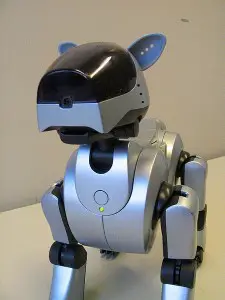
‘AIBO’ stands for ‘Artificial Intelligence Bots’ and refers to the robot invented by Hajime Sorayama for the Sony Corporation. AIBO is an autonomous robot capable of performing given tasks in an unplanned environment without human guidance. AIBO is like a four-legged pet which can walk, see through a camera, and recognize verbal commands in English and Spanish. The original design of AIBO has been preserved at the Museum of Modern Art at the Smithsonian Institution, and this design won the highest Japanese award for designs for its designer Sorayama. AIBOware is a trademark of Sony for its software. The Life AIBOware enables the owner to interact with the pet and raise it from a pup to the adult stage through continued interaction.
8. QRIO
‘QRIO’ stands for ‘Quest for Curiosity,’ and this robot was initially named ‘Sony Dream Robot-SDR.’ It is a two-legged humanoid entertainment robot. It weighs 7.3 kgs and is 0.6 m (2 ft.) tall. QRIO can recognize and remember faces and the voice of a person. It can also run at a speed of 23 cms per second. It is in the Guinness World Records (2005) for being the first two-legged robot capable of running; defined as moving while both legs are off the ground simultaneously.
9. ASIMO
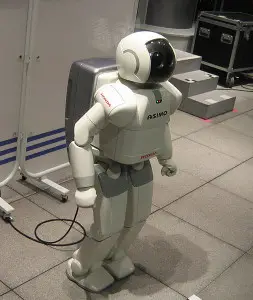
‘ASIMO’ is an acronym for ‘Advanced Steps in Innovative Mobility.’ It is shaped like a human figure. It was developed by Honda and introduced in 2000. The robot weighs 54 kgs, stands 130 cm (4 ft.3 inches) tall, and is capable of walking or running on two feet at the speed of 6 km per hour. Since June, 2005, ASIMO has been displayed at Innoventions at Disneyland, USA. A 15-minute feature film is shown there, and the show is called ‘Say ‘Hello’ to Honda’s ASIMO.’
10. TOPIO

TOPIO, Tosy Ping Pong Robot, is a two-legged, human-shaped robot created to play tennis against a human player. It was created by a Vietnamese Robotics firm Tosy in 2005. It was exhibited for the first time at the Tokyo International Robot Exhibition on November 28, 2007. It stands about 1.88 m (6ft.-2 inches) and weighs about 120 kgs. Each TOPIO uses artificial intelligence to learn and utilize the experience for improvement.
Conclusion:
Man is at war with two great foes and friends, viruses and machines. Bacteria are mostly friendly and by far less inimical like pathogens or the disease-causing bacteria. Machines too have similarly and mostly played a friendly role in the development of human civilization, but the reliance upon machines has also produced some adverse effects. In pursuit of a pet-like, reliable, autonomous, and intelligent machine, human beings may indeliberately hurt themselves in the long run.










Leave a Reply